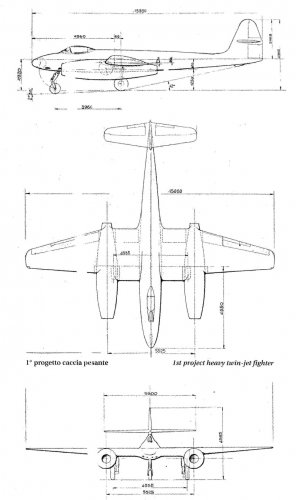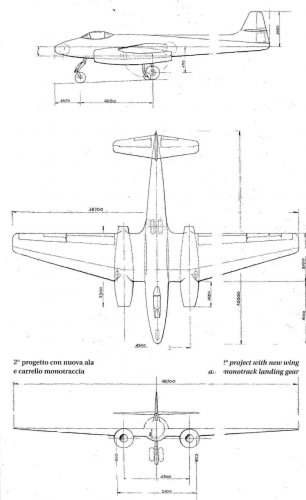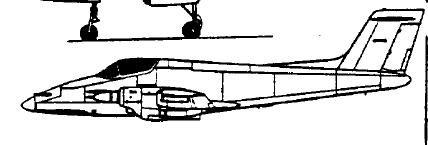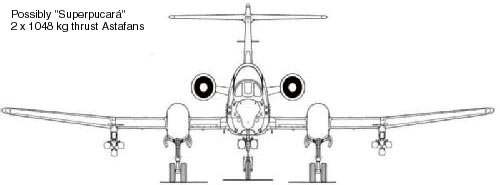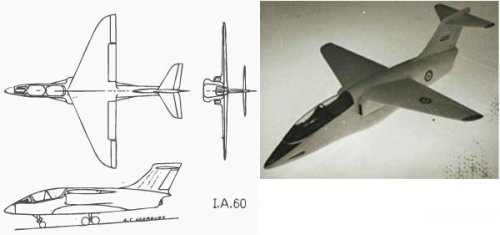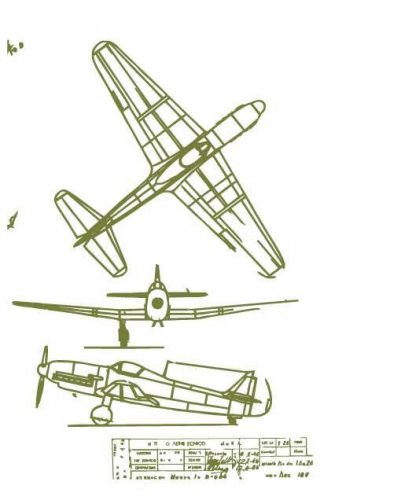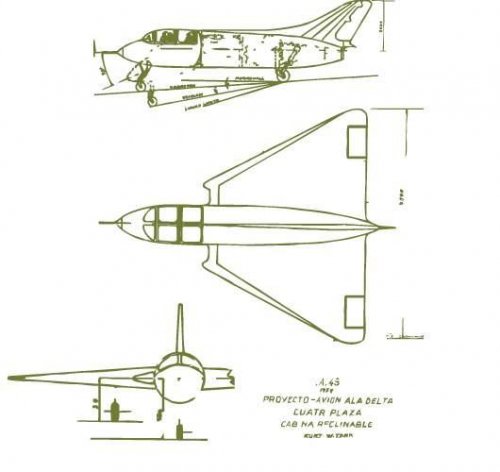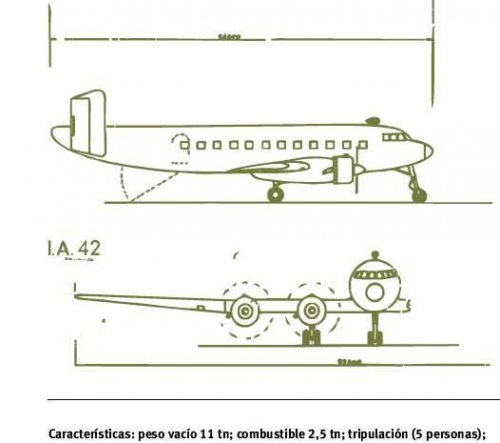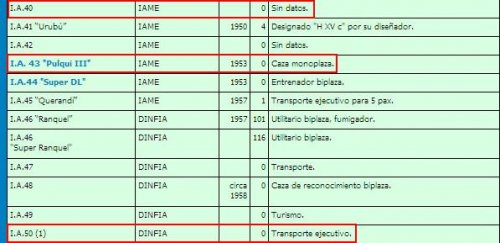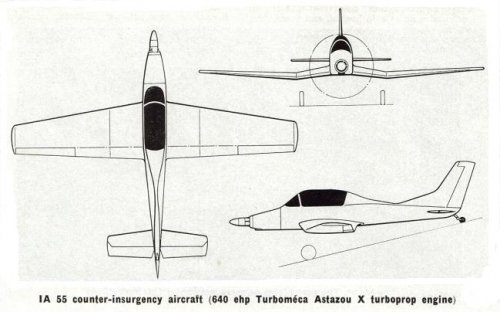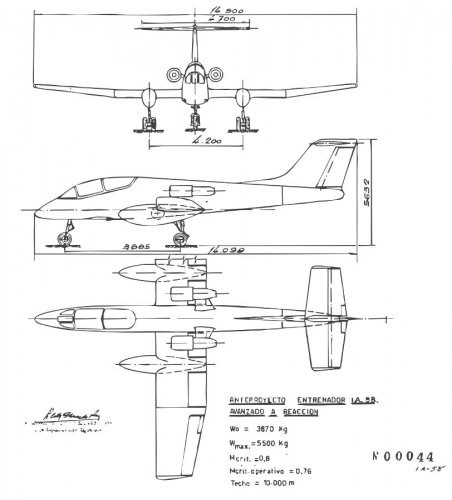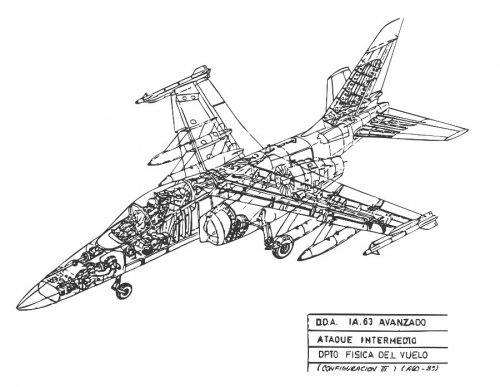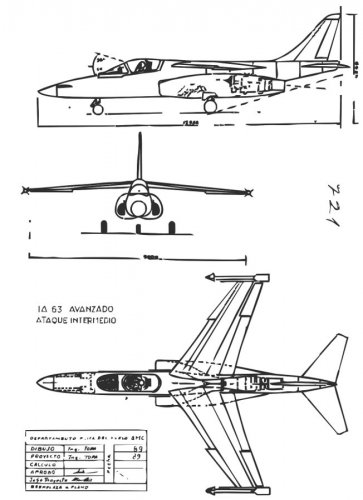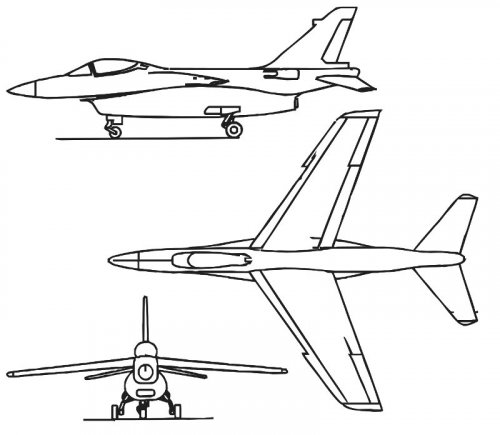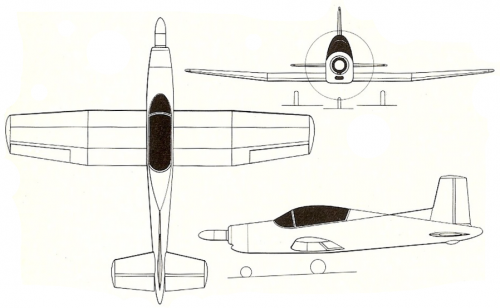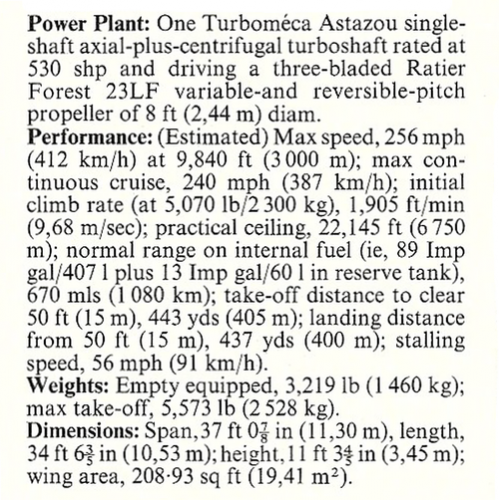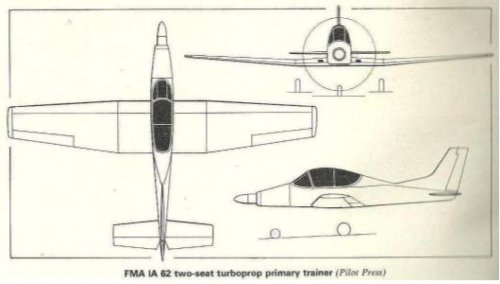- Joined
- 28 November 2006
- Messages
- 711
- Reaction score
- 732
And now more info on the Pallavicino's projects. They never had any official designation, so they remain known as Project 1 and Project 2.
The Project 1, a radical modification of the IAe-30 Nancu (also designed by Pallavicino) was to be a "heavy fighter", in a class of the Gloster Meteor: one-seater, two Rolls-Royce Derwent V engines each producing 3.500 lb static thrust. The plane was to have been armed with four Hispano-Suiza 20mm automatic cannon.
Here are its specifications:
Wing span: 15,00m
Length: 13,98 m
Height: 4,383 m
Wing area: 35,3 m2
Empty weight: 4.225 kg
All-up weight: 7.950 kg
Wing loading: 225 kg/sq.m
Max. speed @ SL: 910 kph
Max. speed @ 9150 m: 970 kph
Climbing speed @ SL: 26 mps
Climb speed to 9150 m: 8'22"
Ceiling: 15.240m
3 tons of fuel
range 2.300 km
Project 2 was conceived as a light bomber. Two crew: the pilot and the navigator, who was to be seated in a glazed nose or behind the pilot (in such a case the nose would remain solid as in the attached drawing). Armament included four Hispano-Suiza cannon and two bombs of 900 or 1000 kg each in an internal bomb bay. It could also carry twenty 75mm air-to-ground rockets.
Specifications of the Project 2:
Wing span: 18,70 m
Length: 14,00m
Height: 4,65 m
Wing area: 46,65 sq.m
Wing loading: 280 kg/sq.m
Empty weight: 6.500 kg
All-up weight: 13.070 kg
Max. speed @ SL: 810 kph
Max. speed @ 9150 m: 870 kph
Climbing speed: 15,2 mps
Climb time to: 9150 m in 15'55"
Ceiling: 12.200 m
Range with 4 t of fuel and 2 t of bombs: 3.300 km
And finally below you may have a look at the Pallavicino's aircraft drawings (poor quality of the scans is an effect of my scanner's malfunction, for which I am sorry).
[source: Italian magazine "Aero Fan" n. 61, April- June 1997]
Best regards,
Piotr
The Project 1, a radical modification of the IAe-30 Nancu (also designed by Pallavicino) was to be a "heavy fighter", in a class of the Gloster Meteor: one-seater, two Rolls-Royce Derwent V engines each producing 3.500 lb static thrust. The plane was to have been armed with four Hispano-Suiza 20mm automatic cannon.
Here are its specifications:
Wing span: 15,00m
Length: 13,98 m
Height: 4,383 m
Wing area: 35,3 m2
Empty weight: 4.225 kg
All-up weight: 7.950 kg
Wing loading: 225 kg/sq.m
Max. speed @ SL: 910 kph
Max. speed @ 9150 m: 970 kph
Climbing speed @ SL: 26 mps
Climb speed to 9150 m: 8'22"
Ceiling: 15.240m
3 tons of fuel
range 2.300 km
Project 2 was conceived as a light bomber. Two crew: the pilot and the navigator, who was to be seated in a glazed nose or behind the pilot (in such a case the nose would remain solid as in the attached drawing). Armament included four Hispano-Suiza cannon and two bombs of 900 or 1000 kg each in an internal bomb bay. It could also carry twenty 75mm air-to-ground rockets.
Specifications of the Project 2:
Wing span: 18,70 m
Length: 14,00m
Height: 4,65 m
Wing area: 46,65 sq.m
Wing loading: 280 kg/sq.m
Empty weight: 6.500 kg
All-up weight: 13.070 kg
Max. speed @ SL: 810 kph
Max. speed @ 9150 m: 870 kph
Climbing speed: 15,2 mps
Climb time to: 9150 m in 15'55"
Ceiling: 12.200 m
Range with 4 t of fuel and 2 t of bombs: 3.300 km
And finally below you may have a look at the Pallavicino's aircraft drawings (poor quality of the scans is an effect of my scanner's malfunction, for which I am sorry).
[source: Italian magazine "Aero Fan" n. 61, April- June 1997]
Best regards,
Piotr

